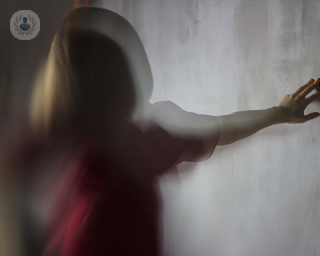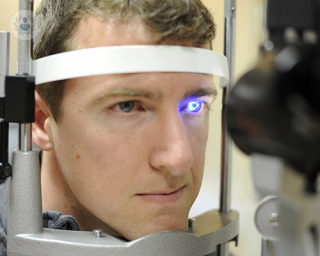Secondary glaucoma
Dr Olubunmi Ogunleye - Ophthalmology
Created on: 04-28-2017
Updated on: 05-24-2023
Edited by: Carlota Pano
What is secondary glaucoma?
Glaucoma is a common eye condition where the optic nerve that connects the eye to the brain has become damaged. There are different types of glaucoma, the most common being primary open-angle glaucoma. Other types include acute angle-closure, secondary glaucoma and congenital (childhood) glaucoma.
Secondary glaucoma, as the name suggests, is caused by an underlying eye condition or external factor. As with primary glaucoma, it can be of open or closed angles (which means there are different mechanisms causing the eye pressure rise), and can occur in both eyes.

What conditions cause secondary glaucoma?
Secondary glaucoma can occur due to conditions such as:
- Uveitis - inflammation of the inner eye
- Eye injury
- Bleeding inside the eye
- An eye tumour
- Diabetes
- Congenital problems
- Steroid medication
What are the symptoms of secondary glaucoma?
There may be no symptoms during the early stages of secondary glaucoma. The condition is normally picked up by the eye specialist when the primary cause of glaucoma has been identified. As secondary glaucoma progresses, symptoms may include the loss of peripheral field of vision and difficulty reading or climbing stairs. Reading and vision are still normally good. If left untreated, sight may be lost. Some patients report eye ache with cloudy vision.
How is secondary glaucoma diagnosed?
Secondary glaucoma is detected through regular routine eye examinations. Everyone with risk factors should have regular sight tests regardless of age. There are three main tests to check for glaucoma. The first looks at the appearance of the main nerve in the eye (ophthalmoscopy). The second measures the pressure in the eye (tonometry), and the third glaucoma test checks the field of vision (perimetry).
How is secondary glaucoma treated?
The underlying condition is addressed first. Vision loss from glaucoma is permanent, which means that glaucoma therapy is started immediately to minimise any further damage. Treatment is important, even if in some cases vision appears normal, as it may get worse without the patient realising. The goal behind the treatment of glaucoma is to reduce the level of eye pressure to a point at which no further damage to the optic nerve is possible. This is achieved with a variety of means, including eye drops, tablets, laser eye treatment, and surgery.






